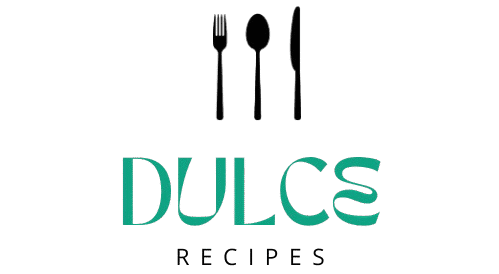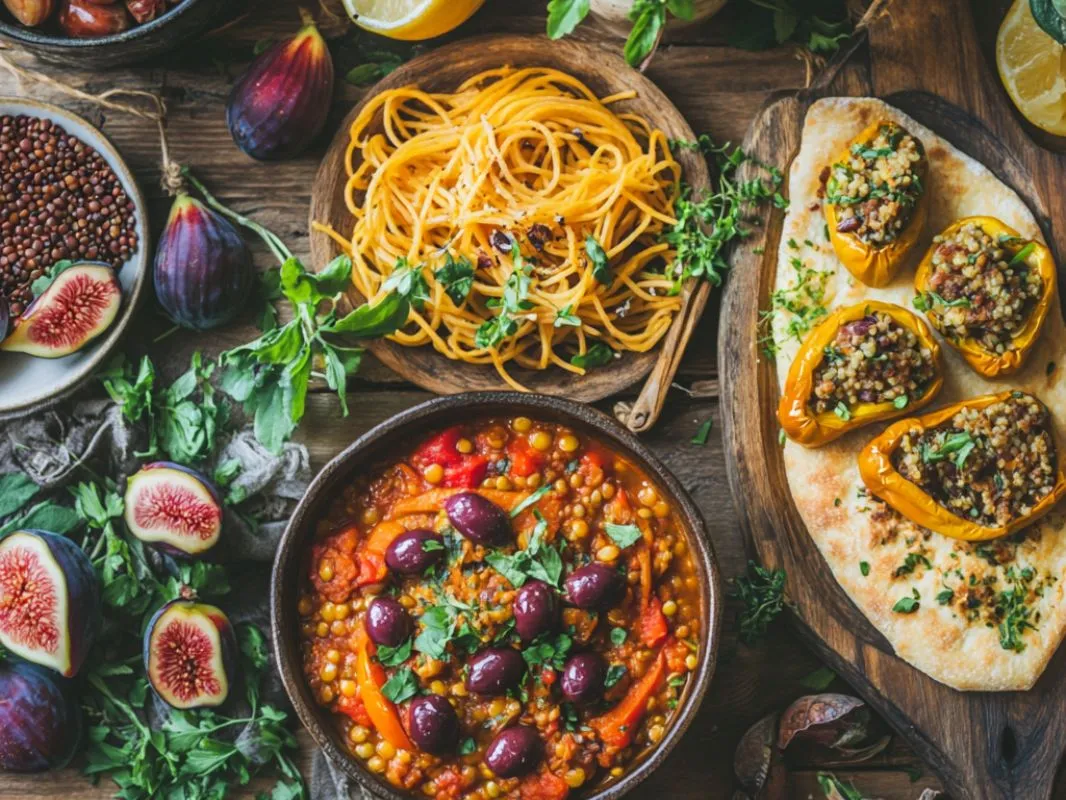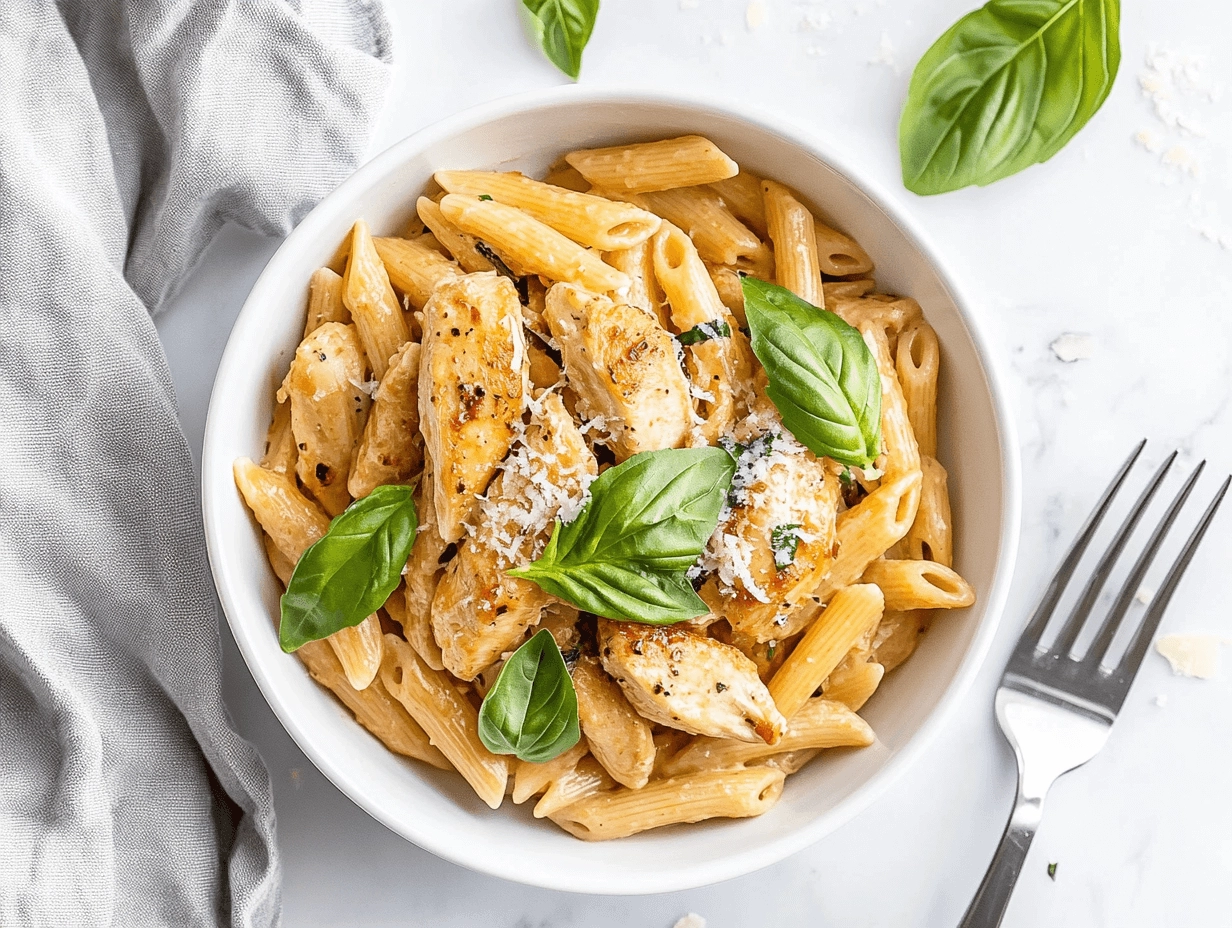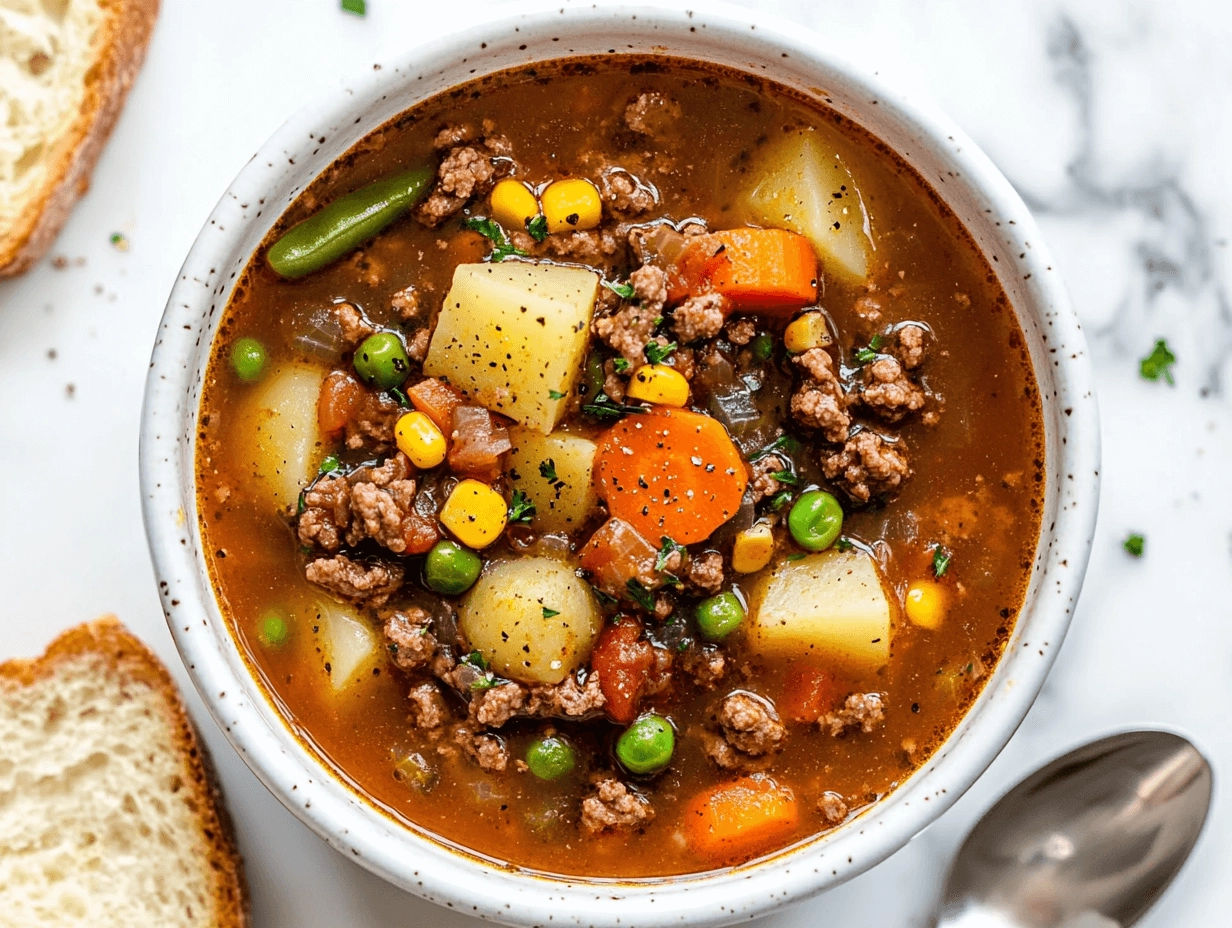Lent is a season of reflection, simplicity, and spiritual growth observed by millions of people worldwide. This period often involves fasting or abstaining from certain foods, with many choosing to forgo meat. Consequently, the need for creative, satisfying, and nutritious Lent dinner recipes becomes essential. Whether you observe Lent for religious reasons or simply want to explore more plant-based meals, this guide offers delicious ideas to inspire your meal planning.
In this article, you’ll discover traditional Lent dishes, creative meat-free meals, and nutritious recipes that nourish both body and soul. Additionally, we’ll explore the historical significance of Lenten foods, provide expert cooking tips, and answer frequently asked questions about Lent-friendly meals.
Table of Contents
Discover more delicious recipes and ideas by visiting our homepage!
Traditional Lent Dinner Recipes
What Is the Traditional Food of Lent?
lent dinner recipes Traditionally, Lent focuses on simplicity and humility, which is reflected in the foods consumed. Many cultures have passed down Lenten recipes for generations, often centered around whole grains, legumes, vegetables, and seafood. Dishes like lentil soups, hearty vegetable stews, and simple fish meals are staples during this time.
For example, in Italy, Pasta e Ceci (pasta with chickpeas) is a beloved Lenten dish. Its creamy texture, derived from mashed chickpeas, makes it hearty and filling without the need for meat. In Greece, Fasolada, a white bean soup with tomatoes, carrots, celery, and olive oil, is often referred to as the national dish because of its simplicity and nourishing qualities.
Moreover, many people today are exploring easy gluten-free dinner ideas that align with Lenten practices while accommodating dietary restrictions. These recipes are wholesome, flavorful, and perfect for those observing both religious and health-conscious diets.
What Did Jesus Eat for Lent?
While the Bible doesn’t provide a detailed account of Jesus’ diet during Lent, historical and cultural contexts offer clues. Jesus likely consumed foods typical of the Mediterranean region, such as fish, flatbread, olives, figs, dates, and lentils. Meals were modest and focused on fresh, unprocessed ingredients.
Drawing inspiration from this simple, plant-based diet can help us connect with the spiritual essence of Lent. For example, dishes like lentil stews with olive oil, barley salads, and roasted vegetables reflect the humble yet nourishing meals common during Jesus’ time. These recipes not only honor tradition but also promote healthy, balanced eating during the Lenten season.
Additionally, incorporating these ancient ingredients into modern dishes can create a meaningful culinary experience. Consider making a simple flatbread with olive oil and herbs or a fig and date salad with mixed greens, walnuts, and a light vinaigrette for a wholesome Lenten meal.
Meat-Free Meal Ideas for Lent

What to Eat on Good Friday Besides Fish Dinner?
lent dinner recipes Good Friday is one of the most significant days during Lent, and many people abstain from meat, often turning to fish as a staple. However, there are countless delicious, meat-free alternatives to consider. Whether you’re avoiding fish or simply looking for variety, here are some satisfying ideas:
- Hearty Vegetable Stews: Stews made with seasonal vegetables, legumes, and aromatic spices are both comforting and filling. Try a Moroccan-inspired chickpea stew with warm spices like cumin, coriander, and cinnamon. Add sweet potatoes and kale for extra nutrition.
- Stuffed Bell Peppers: Fill bell peppers with quinoa, black beans, corn, and diced tomatoes. Top with avocado slices and a sprinkle of lime juice for a fresh, zesty flavor.
- Savory Grain Bowls: Combine brown rice, roasted vegetables, avocado, and a tahini drizzle for a nutrient-dense bowl. Add chickpeas or lentils for an extra protein boost.
For those seeking more variety, AIP dinner recipes provide creative, nutrient-dense options that are both meat-free and suitable for specific dietary needs. These recipes are perfect for Good Friday and beyond, offering wholesome meals that support both health and tradition.
Can I Eat Pasta During Lent?

Absolutely! Pasta is a versatile and satisfying option for Lent, provided it’s prepared without meat. There are countless ways to enjoy pasta with plant-based sauces, fresh vegetables, and wholesome ingredients. Here are a few ideas:
- Lemon Garlic Spaghetti: Toss whole-grain spaghetti with olive oil, fresh garlic, lemon zest, and chopped parsley. Add a sprinkle of red pepper flakes for a subtle kick.
- Roasted Veggie Pasta: Combine roasted zucchini, bell peppers, cherry tomatoes, and onions with penne pasta. Drizzle with olive oil and sprinkle with fresh basil for a colorful, flavorful dish.
- Creamy Avocado Pesto Pasta: Blend ripe avocados, fresh basil, garlic, lemon juice, and a touch of olive oil to create a creamy, dairy-free pesto. Toss with your favorite pasta and top with cherry tomatoes.
If you’re gluten-sensitive, opt for gluten-free pasta made from quinoa, chickpeas, or brown rice. These alternatives are not only nutritious but also offer unique textures and flavors that complement a variety of sauces and toppings.
Nutritional Considerations During Lent
Is Cheese OK for Lent?
lent dinner recipes The answer depends on your specific religious tradition. In the Roman Catholic Church, dairy products like cheese are generally allowed, while Eastern Orthodox Christians often abstain from both meat and dairy. Regardless of your fasting rules, there are plenty of ways to create delicious Lenten meals with or without cheese.
If you’re including cheese in your meals, consider:
- Caprese Salad: Fresh mozzarella, sliced tomatoes, basil, and a drizzle of balsamic glaze make a simple, refreshing dish that’s perfect for Lent.
- Ricotta-Stuffed Shells: Fill large pasta shells with ricotta cheese, spinach, and fresh herbs. Top with marinara sauce and bake until bubbly for a comforting, meat-free dinner.
For those avoiding dairy, plant-based alternatives like cashew cheese, almond ricotta, or nutritional yeast can add rich, cheesy flavors to your dishes. Nutritional yeast, in particular, has a savory, umami taste that works well in pasta sauces, salads, and even popcorn.
What Are You Supposed to Eat During Lent?
During Lent, the focus is on simple, wholesome foods. The general rule is to abstain from meat and, in some traditions, dairy. Instead, meals should be built around plant-based ingredients that nourish the body while supporting spiritual reflection.
Common Lenten foods include:
- Legumes: Lentils, chickpeas, black beans, and peas are excellent sources of protein and fiber. They’re versatile, budget-friendly, and perfect for soups, stews, and salads.
- Whole Grains: Brown rice, quinoa, barley, and oats provide sustained energy. Pair them with vegetables, legumes, and healthy fats for balanced, satisfying meals.
- Fruits and Vegetables: Seasonal produce adds color, flavor, and essential nutrients. Roasted root vegetables, sautéed greens, and fresh salads are all great choices during Lent.
Incorporating these foods into your meals promotes not only physical health but also mindfulness and gratitude. Preparing simple, nourishing dishes can be a form of meditation, helping you focus on the spiritual aspects of Lent.
Lent Dinner Recipes (Ingredients & Instructions)
Recipe 1: Mediterranean Lentil Stew
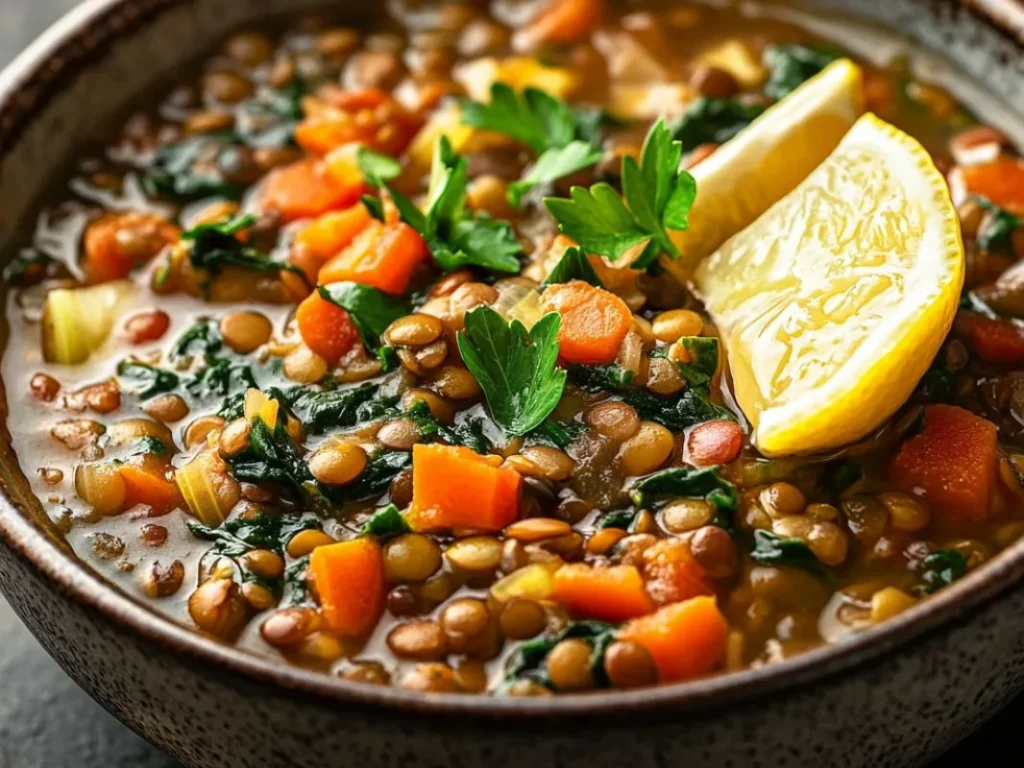
lent dinner recipes This hearty, flavorful stew is perfect for Lent. Packed with protein-rich lentils, fresh vegetables, and aromatic spices, it’s both nourishing and satisfying.
Ingredients Table:
| Ingredient | Amount | Notes |
|---|---|---|
| Green lentils | 1 cup | Rinsed and drained |
| Olive oil | 2 tbsp | Extra virgin |
| Onion | 1 | Chopped |
| Carrots | 2 | Diced |
| Celery | 2 stalks | Chopped |
| Garlic | 4 cloves | Minced |
| Tomatoes | 3 | Diced |
| Vegetable broth | 4 cups | Low-sodium preferred |
| Spinach | 2 cups | Fresh |
| Cumin | 1 tsp | Ground |
| Paprika | 1 tsp | Smoked or sweet |
| Salt & pepper | To taste | Adjust as needed |
| Lemon juice | 1 tbsp | For brightness |
Instructions:
- Heat olive oil in a large pot over medium heat. Add onions, carrots, and celery; sauté until softened (about 5 minutes).
- Stir in garlic, cumin, and paprika; cook for an additional minute until fragrant.
- Add lentils, tomatoes, and vegetable broth. Bring to a boil, then reduce heat and simmer uncovered for 30 minutes or until lentils are tender.
- Stir in fresh spinach and cook for another 2 minutes until wilted. Season with salt, pepper, and a splash of lemon juice before serving.
This stew pairs beautifully with crusty bread or a side salad. Additionally, it’s even better the next day, as the flavors continue to develop.
Dynamic Content – Variations & Tips
Common Mistakes When Preparing Lent Meals
Preparing Lent meals can be both rewarding and challenging. Here are some common mistakes to avoid:
- Relying Too Much on Processed Foods: While convenient, processed meat substitutes often contain additives and preservatives. Instead, focus on whole foods like legumes, grains, and fresh vegetables for optimal nutrition.
- Lack of Variety: Eating the same dishes repeatedly can lead to boredom and nutrient deficiencies. Explore different cuisines, such as Mediterranean, Asian, or Latin American, to keep your meals exciting and balanced.
Expert Tips for Flavorful Meat-Free Dinners
- Use Fresh Herbs and Spices: Fresh herbs like basil, cilantro, and parsley add vibrant flavors. Spices such as cumin, smoked paprika, and turmeric can transform simple ingredients into bold, delicious meals.
- Incorporate Acid: A splash of lemon juice or vinegar brightens flavors and adds depth to plant-based dishes. This simple trick can elevate soups, stews, salads, and grain bowls.
How to Make Lent Dinner Recipes Step-by-Step (Continued)
Preparing delicious and wholesome Lent dinner recipes doesn’t have to be complicated. By following simple steps and using fresh, nutrient-dense ingredients, you can create meals that satisfy both your taste buds and spiritual intentions. Here’s a continuation of our step-by-step guide to making hearty, flavorful Lent meals.
Recipe 2: Quinoa-Stuffed Sweet Potatoes

This recipe is packed with plant-based protein, fiber, and vibrant flavors. The combination of roasted sweet potatoes, quinoa, and fresh vegetables makes it a nutrient-rich option perfect for Lent.
Ingredients Table:
| Ingredient | Amount | Notes |
|---|---|---|
| Sweet potatoes | 4 | Medium-sized, scrubbed and halved |
| Quinoa | 1 cup | Rinsed |
| Olive oil | 2 tbsp | Extra virgin |
| Black beans | 1 cup | Drained and rinsed |
| Corn | 1 cup | Fresh or frozen |
| Red bell pepper | 1 | Diced |
| Green onions | 2 stalks | Chopped |
| Lime juice | 2 tbsp | Freshly squeezed |
| Cumin | 1 tsp | Ground |
| Paprika | 1 tsp | Smoked for added flavor |
| Salt & pepper | To taste | Adjust as needed |
| Avocado | 1 | Sliced, for topping |
| Fresh cilantro | ¼ cup | Chopped, for garnish |
Instructions:
- Preheat the oven to 400°F (200°C). Place sweet potato halves on a baking sheet, drizzle with olive oil, and season with salt and pepper. Roast for 30-35 minutes until tender.
- While the sweet potatoes are roasting, cook the quinoa according to package instructions. Once cooked, fluff with a fork and set aside.
- In a large bowl, combine cooked quinoa, black beans, corn, bell pepper, green onions, lime juice, cumin, and paprika. Season with salt and pepper to taste.
- Remove sweet potatoes from the oven and let cool slightly. Scoop out a small portion of the flesh to create space for the filling.
- Stuff each sweet potato half with the quinoa mixture. Top with avocado slices and fresh cilantro.
This dish is colorful, satisfying, and rich in nutrients, making it a perfect addition to your Lenten menu. The sweet potatoes provide natural sweetness, while the quinoa and beans offer plant-based protein to keep you full.
Pro Tips & Variations
To keep your Lenten meals exciting and flavorful, consider these expert tips and creative variations:
Tips for Flavorful Lent Dishes
- Layer Your Flavors: Start with a strong base by sautéing onions, garlic, and spices in olive oil. This enhances the depth of flavor in soups, stews, and grain-based dishes.
- Add a Splash of Acid: Brighten up your meals with a squeeze of lemon or a dash of vinegar just before serving. This simple trick balances flavors and adds freshness.
Creative Variations to Try
- Mediterranean Twist: Add Kalamata olives, sun-dried tomatoes, and crumbled feta (if dairy is allowed) to your quinoa-stuffed sweet potatoes for a Mediterranean flair.
- Spicy Kick: Incorporate diced jalapeños or a sprinkle of red pepper flakes to add heat to your dishes.
- Protein Boost: For extra protein, top your meals with roasted chickpeas or tempeh, providing texture and satisfying crunch.
These variations allow you to experiment with different flavors while keeping your meals fresh and enjoyable throughout Lent.
FAQs About Lent Dinner Recipes
Addressing common questions can help clarify Lenten dietary practices and inspire confidence in meal preparation. Here are answers to frequently asked questions, including People Also Ask (PAA) queries:
What Is the Traditional Food of Lent?
Traditional Lenten foods vary by culture but often focus on simple, plant-based ingredients. Common dishes include lentil soups, vegetable stews, and fish-based meals. Staples like bread, olives, legumes, and grains are popular in Mediterranean regions. Additionally, many people enjoy hearty bean soups, roasted vegetables, and rice dishes, reflecting the simplicity of Lenten fasting traditions.
What to Eat on Good Friday Besides Fish Dinner?
If you’re looking for alternatives to fish on Good Friday, consider dishes like:
- Stuffed Bell Peppers: Filled with quinoa, black beans, and fresh vegetables for a protein-rich, meat-free option.
- Vegetarian Tacos: Made with roasted sweet potatoes, black beans, and avocado, served on corn tortillas.
- Creamy Lentil Curry: A fragrant, spiced dish served with basmati rice and fresh herbs.
For more wholesome options, explore gestational diabetes dinner recipes, which offer balanced, nutrient-dense meals suitable for everyone, not just those with specific dietary needs.
What Are You Supposed to Eat During Lent?
During Lent, many people abstain from meat and focus on plant-based foods. This includes legumes, whole grains, fruits, vegetables, nuts, and seeds. Some traditions also limit dairy and eggs. The goal is to embrace simplicity, mindfulness, and spiritual reflection through food. Meals should be nourishing yet modest, aligning with the principles of fasting and self-discipline.
Can I Eat Pasta During Lent?
Yes, pasta is allowed during Lent as long as it’s prepared without meat. To keep your pasta dishes exciting:
- Try Pesto Variations: Use kale, spinach, or basil to make vibrant, dairy-free pesto sauces.
- Experiment with Veggie Noodles: Swap traditional pasta for spiralized zucchini or sweet potato noodles for a lighter, gluten-free alternative.
What Did Jesus Eat for Lent?
While there’s no specific record of what Jesus ate during Lent, historical accounts suggest His diet included simple, whole foods common in the Mediterranean region. This likely consisted of fish, flatbread, olives, figs, dates, lentils, and fresh vegetables. Meals were modest, emphasizing fresh, unprocessed ingredients that supported physical nourishment and spiritual focus.
Is Cheese OK for Lent?
Whether cheese is permitted during Lent depends on your faith tradition. In the Roman Catholic Church, dairy is generally allowed, while Eastern Orthodox Christians often abstain from both meat and dairy products. If avoiding dairy, try plant-based alternatives like cashew cheese, almond ricotta, or nutritional yeast to add savory flavors to your dishes.
Can I Eat Eggs During Lent?
In some traditions, eggs are permitted, while others abstain from them along with meat and dairy. If you’re avoiding eggs, consider using substitutes like flax or chia seeds mixed with water in baking recipes. Tofu also makes an excellent egg replacement in scrambles and quiches.
Is Coffee Allowed During Lent?
Yes, coffee is generally allowed unless you’ve chosen to give it up as part of your personal Lenten sacrifice. Some people opt to reduce caffeine consumption during Lent as an act of discipline, but it’s not universally required.
PrintMediterranean Lentil Stew
- Total Time: 45 minutes
- Yield: 1 large pot (4 servings) 1x
Description
This hearty Mediterranean Lentil Stew is a perfect Lent-friendly meal packed with protein-rich lentils, fresh vegetables, and aromatic spices. It’s comforting, nutritious, and easy to prepare, making it an ideal choice for both weeknight dinners and meal prep.
Ingredients
- 1 cup green lentils, rinsed and drained
- 2 tbsp extra virgin olive oil
- 1 onion, chopped
- 2 carrots, diced
- 2 celery stalks, chopped
- 4 cloves garlic, minced
- 3 tomatoes, diced
- 4 cups vegetable broth (low-sodium preferred)
- 2 cups fresh spinach
- 1 tsp ground cumin
- 1 tsp smoked or sweet paprika
- Salt & pepper to taste
- 1 tbsp lemon juice
Instructions
- Heat olive oil in a large pot over medium heat. Add onions, carrots, and celery; sauté until softened, about 5 minutes.
- Stir in garlic, cumin, and paprika. Cook for an additional minute until fragrant.
- Add lentils, tomatoes, and vegetable broth. Bring to a boil, then reduce heat and simmer uncovered for 30 minutes or until lentils are tender.
- Stir in fresh spinach and cook for another 2 minutes until wilted. Season with salt, pepper, and a splash of lemon juice before serving.
Notes
This stew tastes even better the next day as the flavors develop. Pair it with crusty bread or a simple green salad for a complete meal.
- Prep Time: 10 minutes
- Cook Time: 35 minutes
- Cuisine: Mediterranean
Nutrition
- Calories: 250
- Fat: 7g
- Carbohydrates: 35g
Conclusion
Lent is a time for reflection, simplicity, and spiritual growth, and the meals you prepare can play a meaningful role in this journey. By focusing on wholesome, plant-based ingredients, you can create delicious, satisfying dishes that nourish both body and soul. From traditional lentil stews to creative quinoa-stuffed sweet potatoes, these Lent dinner recipes offer variety, flavor, and nutrition.
Remember to embrace the spirit of Lent by keeping your meals simple yet meaningful. Experiment with new ingredients, explore different cultural dishes, and enjoy the process of preparing food with intention and gratitude.
